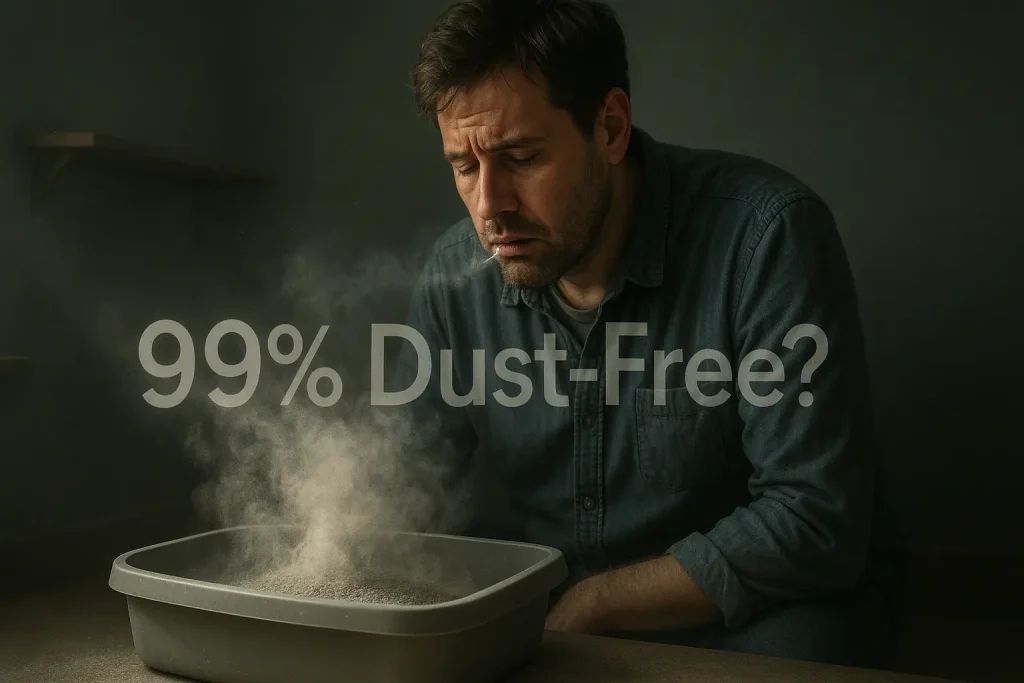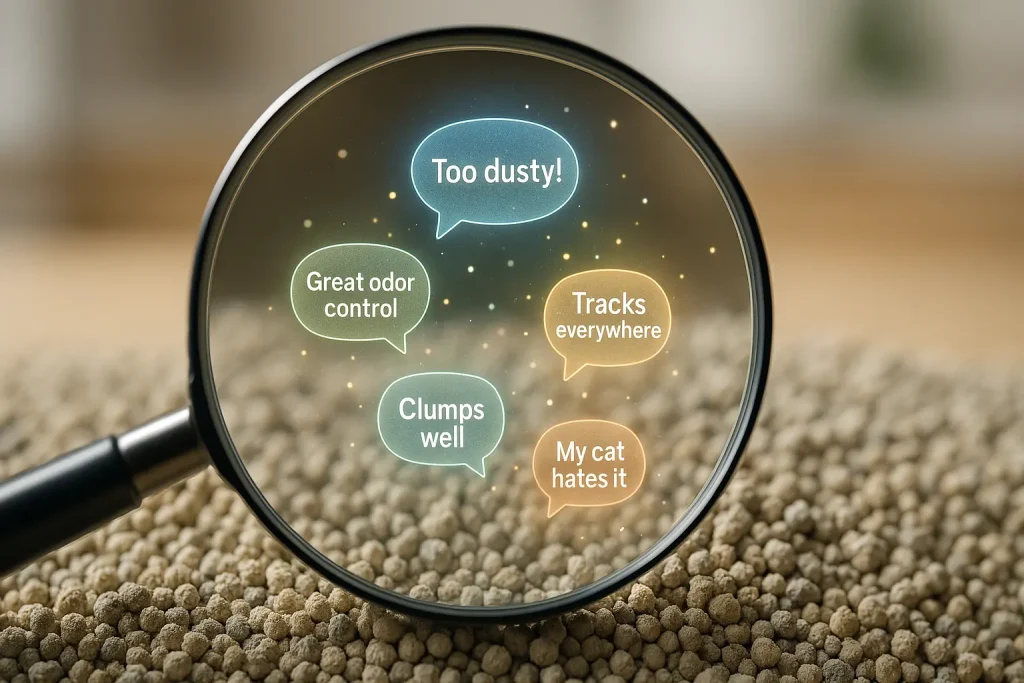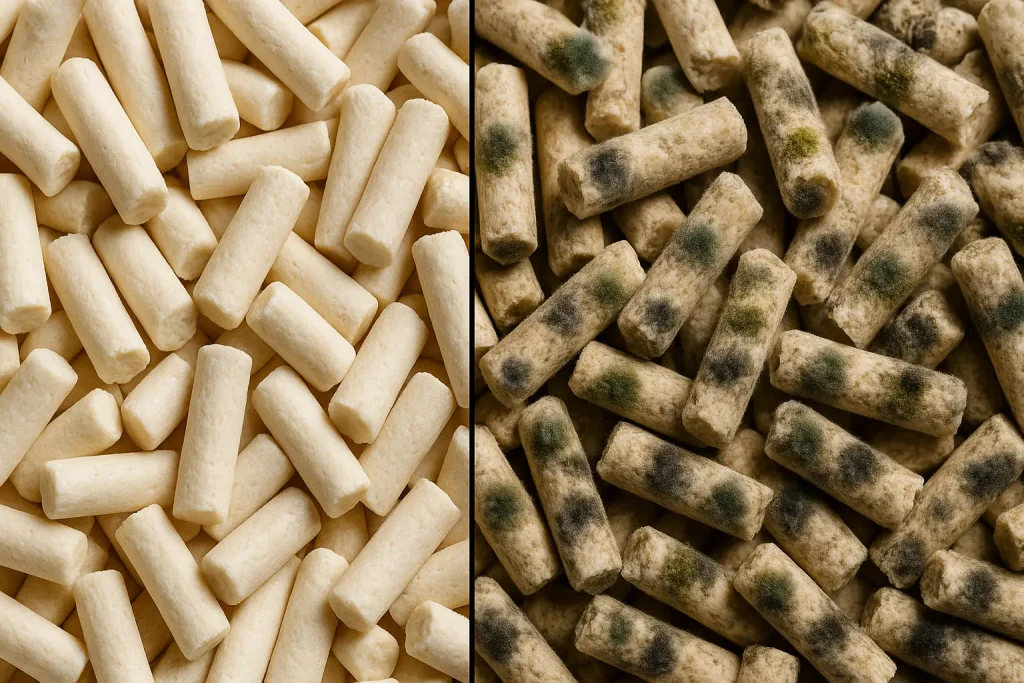The Silent (or Not-So-Silent) Protest: When Your Cat Rejects Their Litter
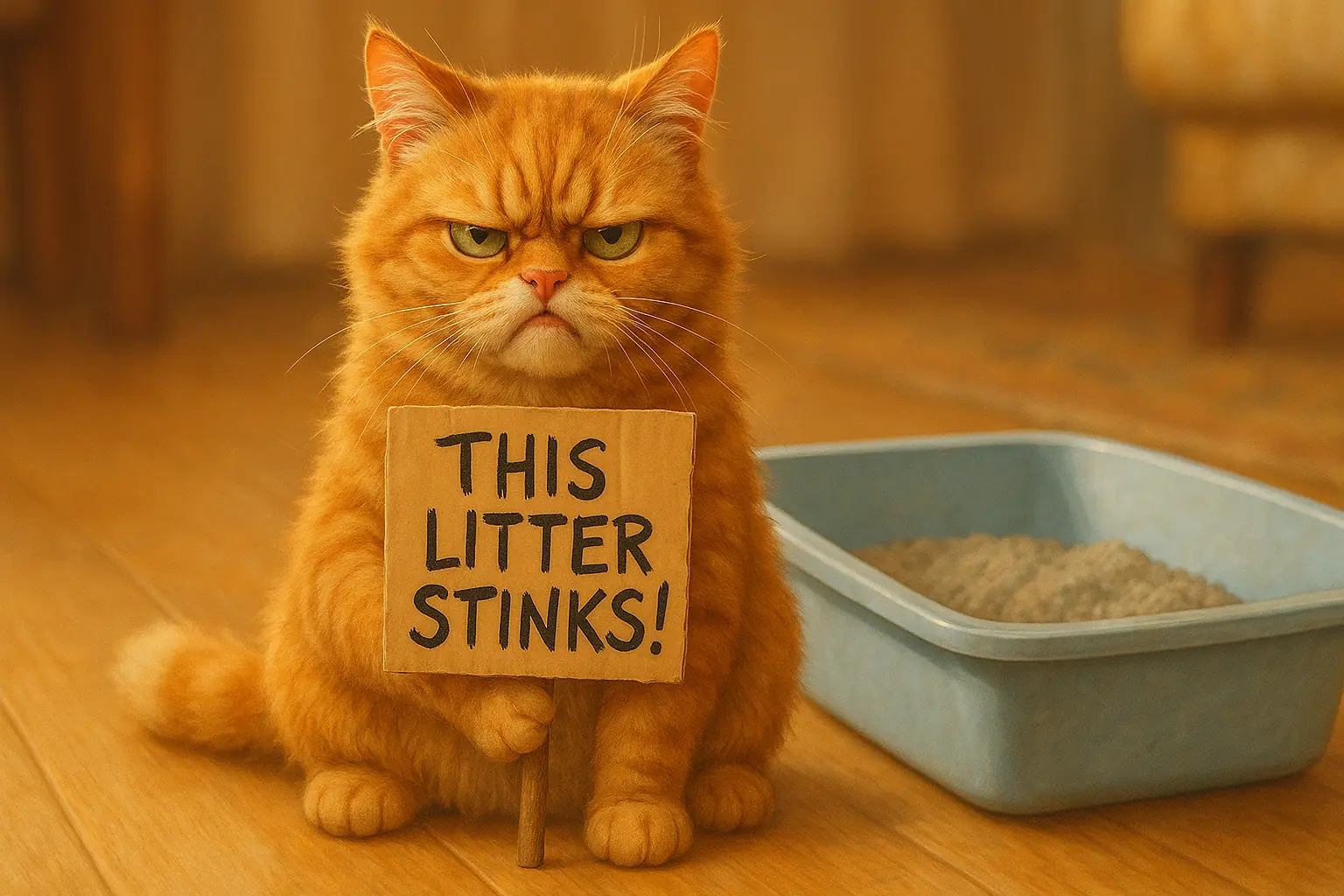
That unexpected mess beside the litter box can be deeply frustrating. Many cat owners face this sudden litter rejection. Your cat is not just misbehaving. They are sending a message. This behavior is often a clear, non-verbal protest.
Cats use actions. They communicate discomfort. The litter box often becomes their protest stage. Maybe the new litter texture hurts paws. Perhaps a strong fragrance offends their keen sense of smell. User data shows a frequent misstep: owners blame the cat. The litter itself is very often the real issue.
This page helps decode those feline signals. Cat Litter Hub analyzes thousands of real user experiences. This vast feedback identifies why cats reject litter. We translate widespread owner observations into actionable understanding. You access the community's hard-won knowledge to solve this common problem.
Decoding the "I Hate This Litter!" Signals: UGC Case Files Unpacked
Cats possess a surprisingly detailed 'complaint' vocabulary about their litter. Our review of countless owner experiences reveals distinct behaviors; each is a clear signal of feline disapproval, forming a code we can help you crack.
The Out-of-Box Offender: When Elimination Becomes Protest
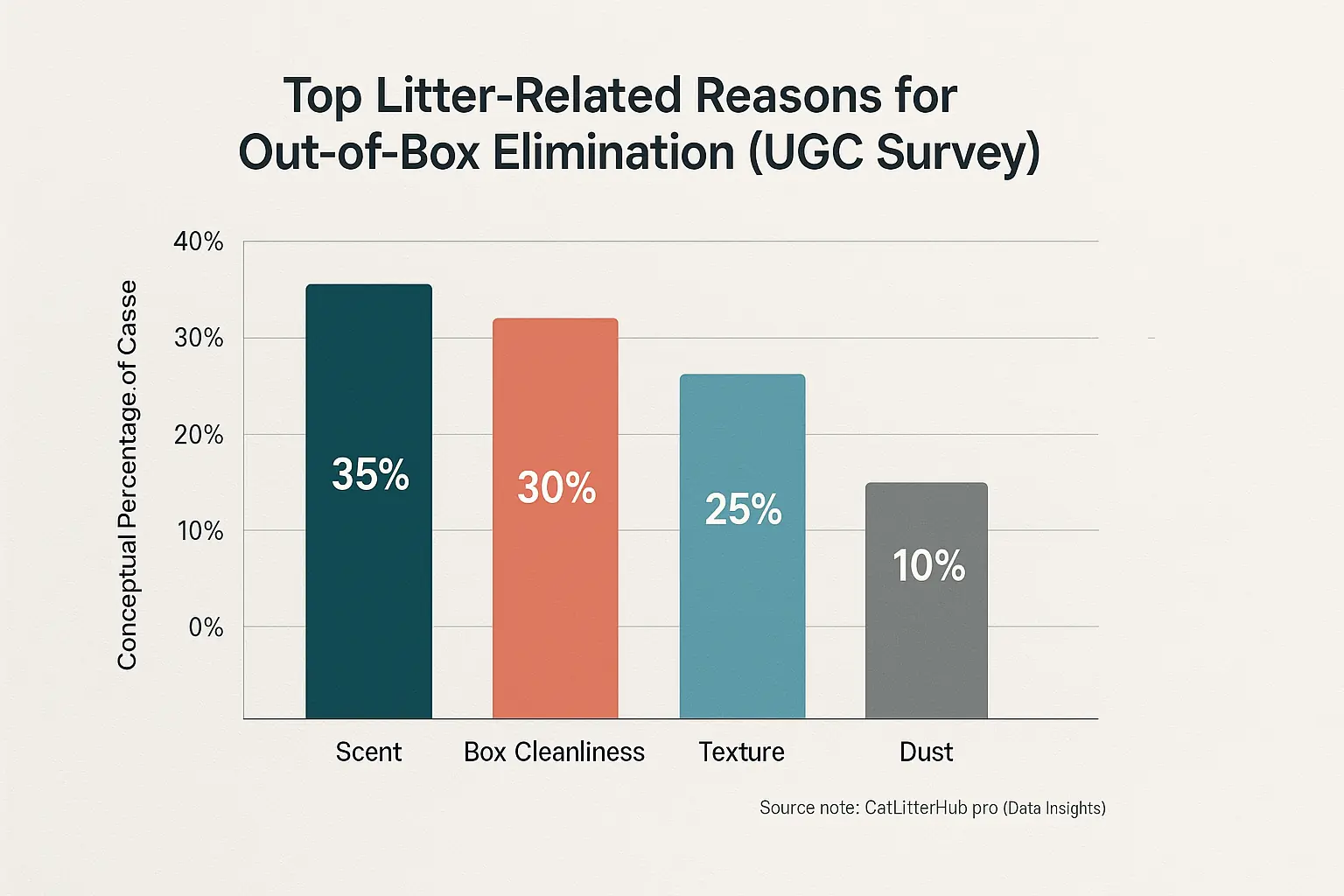
Eliminating just outside the box is a direct message. A very clear one. Patterns consistently seen in user reports identify this as acute litter rejection. Sarah from Ohio shared her frustration: 'Mittens started peeing right on the mat next to her pristine box the day I switched to that new scented clay. Message received!' Many owners echo this. Your cat essentially gives that litter a failing grade.
The location of these "protest deposits" can be telling. Sometimes it is a soft item. More often, it is right beside the offending litter box. A direct critique. Imagine your cat leaving a very pointed, if unpleasant, 'product review' where you absolutely cannot miss it. User discussions frequently mention bathmats or rugs near the litter station as common targets. This is not random.
This out-of-box behavior often starts immediately after a litter change. Or it dramatically worsens then. A frequent theme in owner discussions: 'My cat was perfect for years, then I tried Brand X, and bam! Accidents everywhere.' This sudden shift is rarely a coincidence. It is a strong indicator. Your cat signals disapproval of the new litter, loudly and clearly.
The Hesitant Visitor: Reluctance, Perching & Quick Escapes
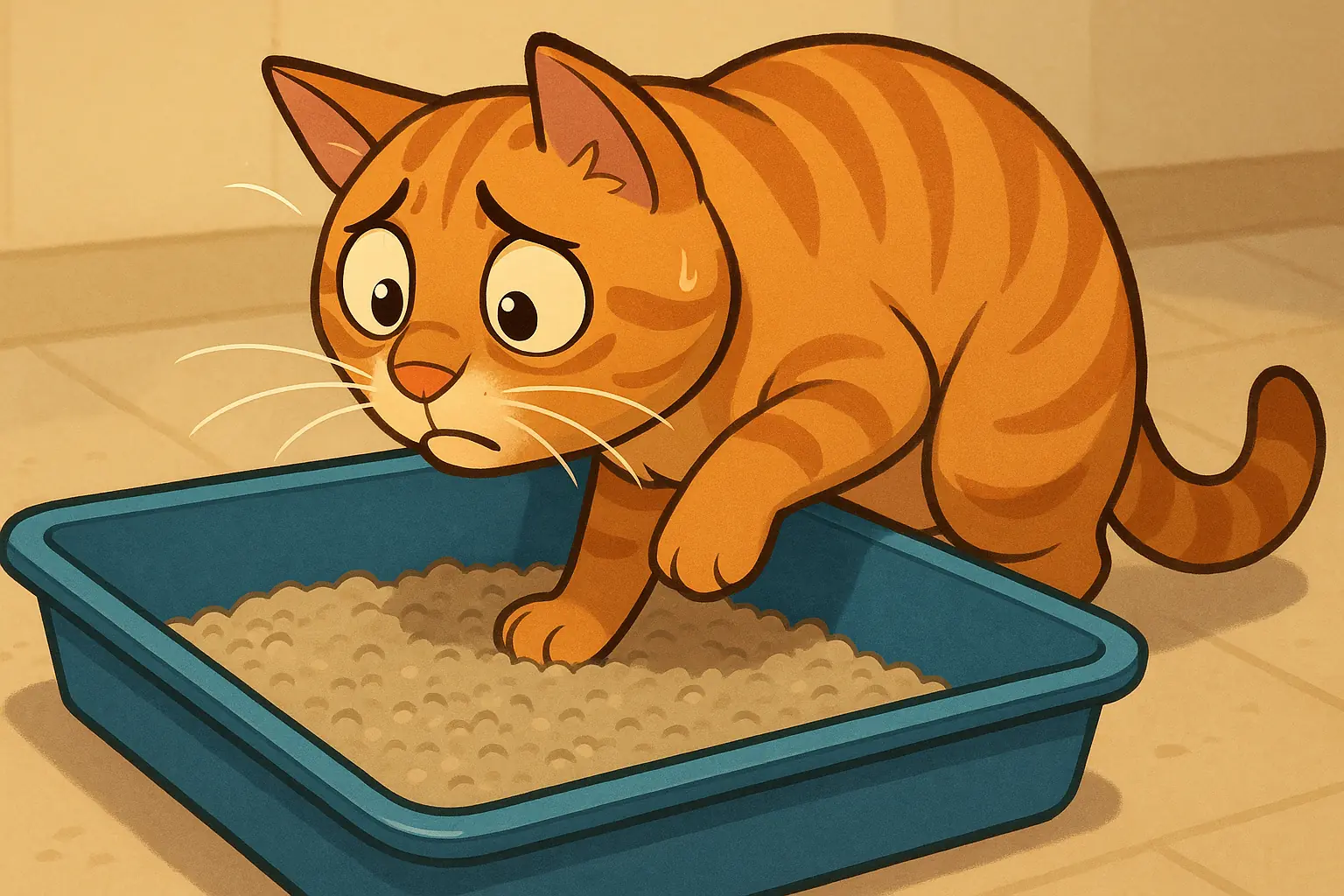
Your cat might hesitate before entering the litter box. This is a common early signal. Many owners observe their cats circling. Or sniffing very cautiously. Perching on the box edge? That's a significant indicator. This behavior often signals discomfort with the litter's texture or scent, a frequent observation in user feedback. Imagine walking barefoot on sharp gravel or through overpowering potpourri; some users describe their cats 'dancing' on certain litters or trying to balance, clearly avoiding full paw contact. This is your cat's polite way of communicating dislike.
Then there's the "quick escape" routine. Does your cat treat the litter box like a hot potato? This 'get in, get out' lightning-fast approach, with minimal digging or covering, is a major red flag users frequently report. It's not a race. Many owners note this 'dash and dump' behavior. They enter. They eliminate. They bolt. The substrate is almost certainly the offender. The cat desires minimal contact. Maximum speed.
These subtle feline discomfort signals are critical. Think of them as polite complaints before a more overt protest, like an accident outside the box. The collective experience of seasoned cat parents frequently points to this pattern. Users who identify these early aversion signs, these often-missed cues, and promptly switch the offending litter often prevent those much larger, messier problems. Smart move.
The Frantic Digger & Flinger: A Sign of Discomfort or Just Play?
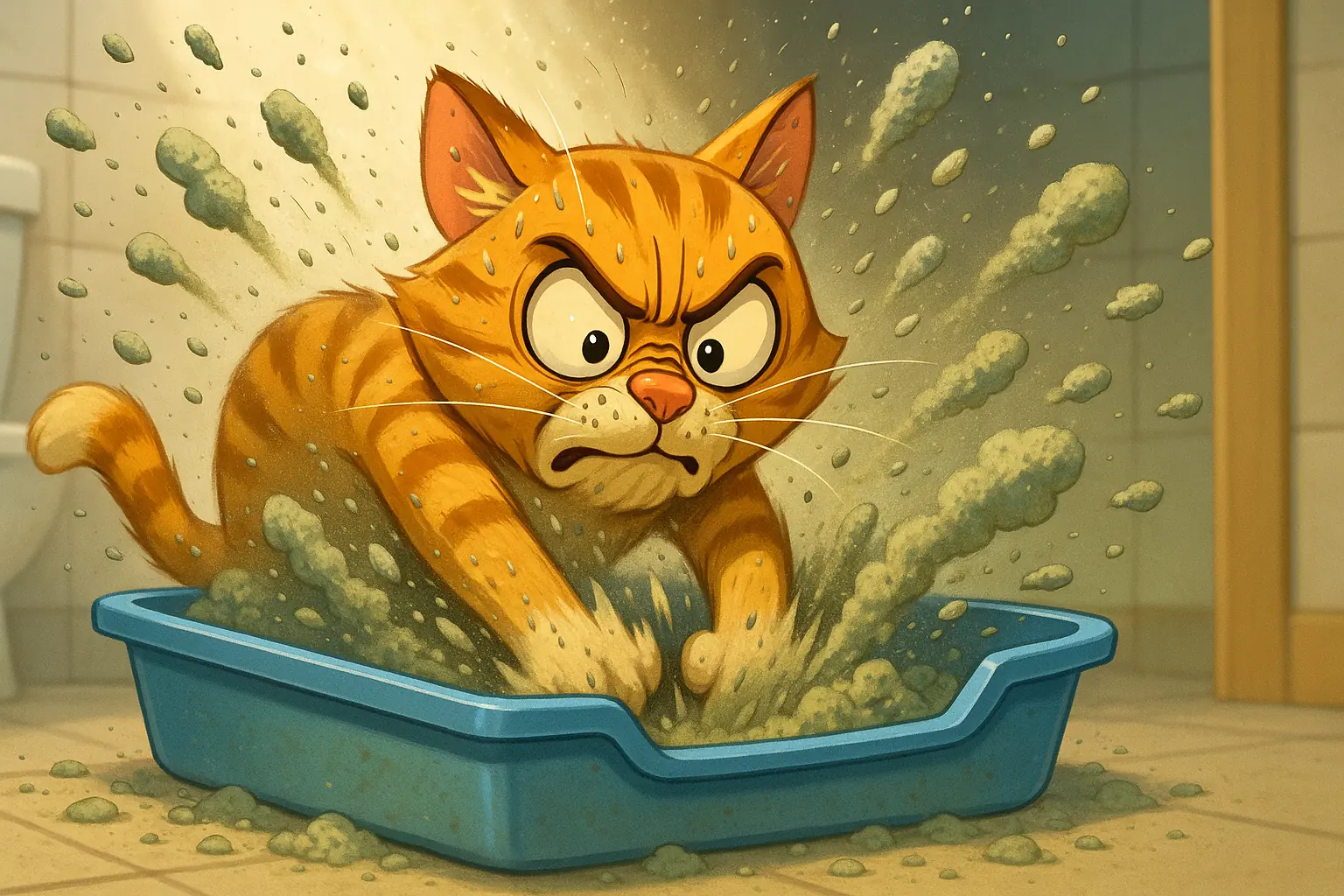
Normal cat digging prepares a preferred potty spot. Frantic digging, however, often signals deeper litter dissatisfaction. Many cat owners report this sudden, vigorous excavation can be a direct protest. One owner described their cat as "excavating for treasure in a toxic waste dump" when using a new, heavily scented brand. The cat's perceived goal wasn't just to cover waste; it was to escape or fundamentally change its immediate environment.
This intense digging behavior might be your cat's desperate attempt to bury an overwhelming scent. User experiences strongly suggest this interpretation. Alternatively, the cat could be frantically searching for one tiny patch of litter that feels less offensive to sensitive paws. "It's like they're trying to dig to China to get away from the smell," many users observe. Others note it's as if cats "search for that one square inch that doesn't feel like walking on glass shards." These actions often point to issues with litter scent or texture.
How can you distinguish this protest digging from simple play? Observing if the behavior coincides with a new litter type or a box needing a clean offers vital clues. This is a common tip from seasoned cat owners. If your cat suddenly transforms into a mini-backhoe immediately after you switched to "Ocean Breeze" scented litter, it's probably not a newfound love for excavation. The collective experience of cat parents suggests it's a complaint, loud and clear.
This "over-digging" phenomenon, as reported by numerous users, can be a significant stress signal. Cats communicate discomfort. Their dramatic litter box antics often translate to very specific grievances about their bathroom setup. Paying attention to these behavioral shifts helps you decipher their needs more accurately.
The Vocal Complainer: Meows, Murmurs, and Hisses of Discontent
Cat vocalizations near the litter box can be telling. A sudden increase in meowing, or new sounds like hisses or growls directed at the box, often indicates your cat dislikes the current litter. Many cat owners describe this. "My normally silent Calico began YOWLING dramatically each time she approached the new pine pellets," one user reported. "It was her clear protest!" This is not contentment. Think of it as your cat's direct, vocal product review.
These feline complaints are rarely random noises. Your cat might be vocalizing "This texture hurts my paws," "This scent is overwhelming," or simply "I am stressed by this whole bathroom situation!" It’s a common observation, echoed in countless reviews: these 'protest meows' are very specific to litter box visits when a disliked product is in use. The message? Discomfort. They are communicating a problem with the only tools they have.
Always consult your veterinarian first if new vocalizations appear. Health issues must be ruled out. But, if the vet gives an all-clear and the 'litter box lament' started right after you introduced that 'mountain fresh' scented clay? User consensus is strong. The collective wisdom from thousands of cat owner experiences points to the new litter as the likely offender. Your cat's feedback is valuable; they are telling you something important about their comfort.
Common Litter Triggers: What Your Cat Might Be REALLY Telling You (UGC Insights)
Specific litter properties frequently cause feline aversion. Our analysis of extensive user feedback pinpoints these usual suspects, which this section now explores.
The Scent Factor: "Pleasant" Perfumes vs. Feline Noses
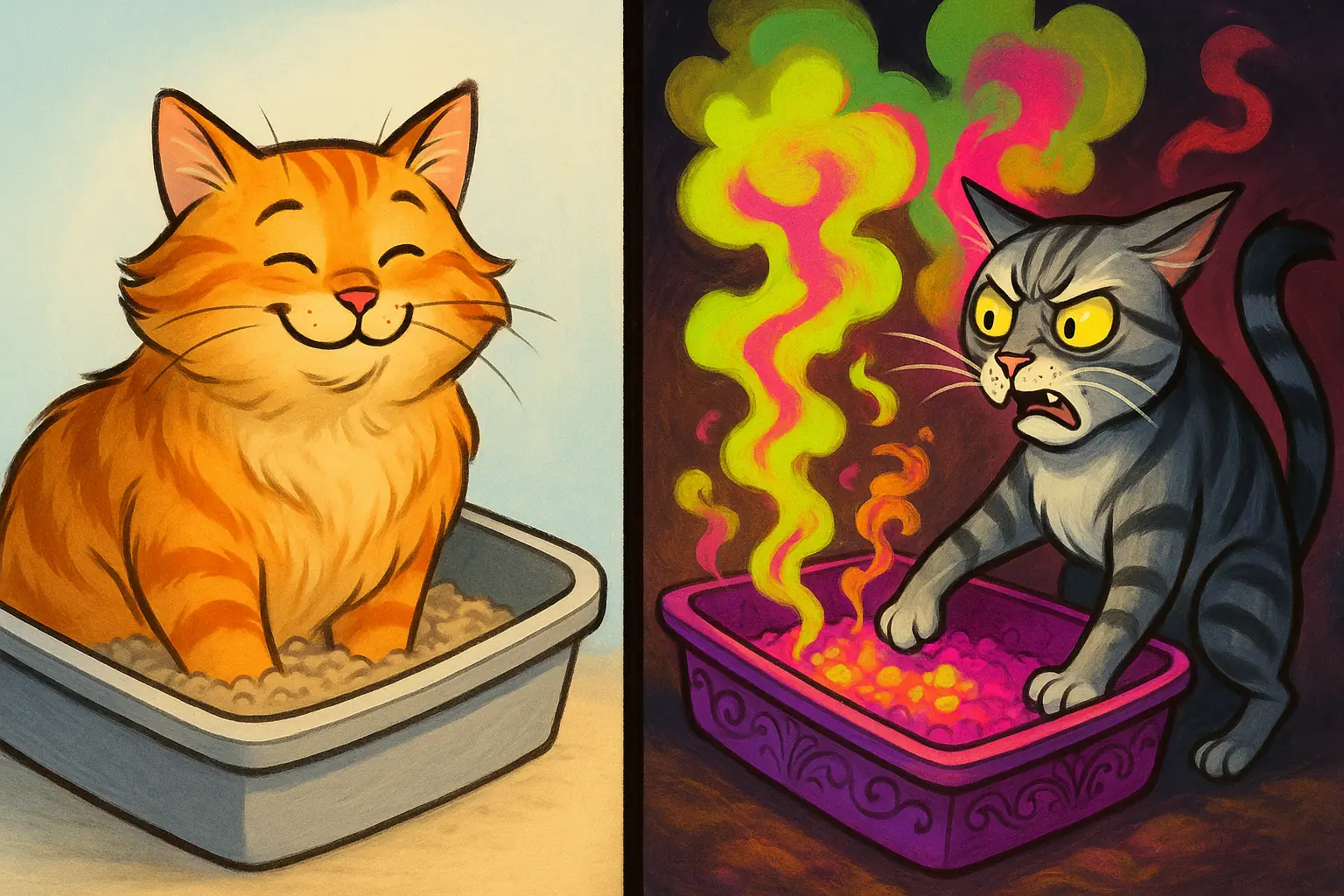
Cat owner experiences overwhelmingly show a core problem. Artificial scents in litter are a top reason for feline aversion. Think about it. Your cat's sense of smell is incredibly powerful, perhaps up to 14 times stronger than yours. That "spring fresh" perfume you detect? To your cat, it can be an overwhelming chemical assault. A dominant theme in cat owner feedback is immediate litter box avoidance right after a scented product is introduced.
Cats often prefer their personal spaces to smell neutral. Or, frankly, like themselves. This preference is deeply rooted in their territorial nature. They don't want their bathroom smelling like a synthetic pine forest or a field of fake lavender. User-generated content is filled with stories of cats happily, finally, using unscented litter after rejecting multiple perfumed varieties. Many cat parents discover their feline companions simply detest those artificial fragrances, no matter how appealing to human noses.
Here's an unspoken truth emerging from thousands of reviews. Scented litters frequently just mask odors. They don't eliminate the underlying cause of smells. And cats? They seem to know the difference. Owners report that while they might be temporarily fooled by the perfume, their cats are not. The collective experience points to one clear feline preference: a truly clean, genuinely odor-free box. This ideal is achieved with good quality unscented litter and, crucially, consistent, regular scooping.
So, what does this mean for your litter choice? The overwhelming user consensus suggests that human-pleasing scents can be a form of feline torture. Listening to the collective voice of cat owners, it becomes clear. Prioritizing your cat's sensitive nose over a perfumed cover-up often leads to a happier cat and a more harmonious litter box situation. Many find it's that simple.
Texture Troubles: When "Walking on Sunshine" Feels Like Hot Coals
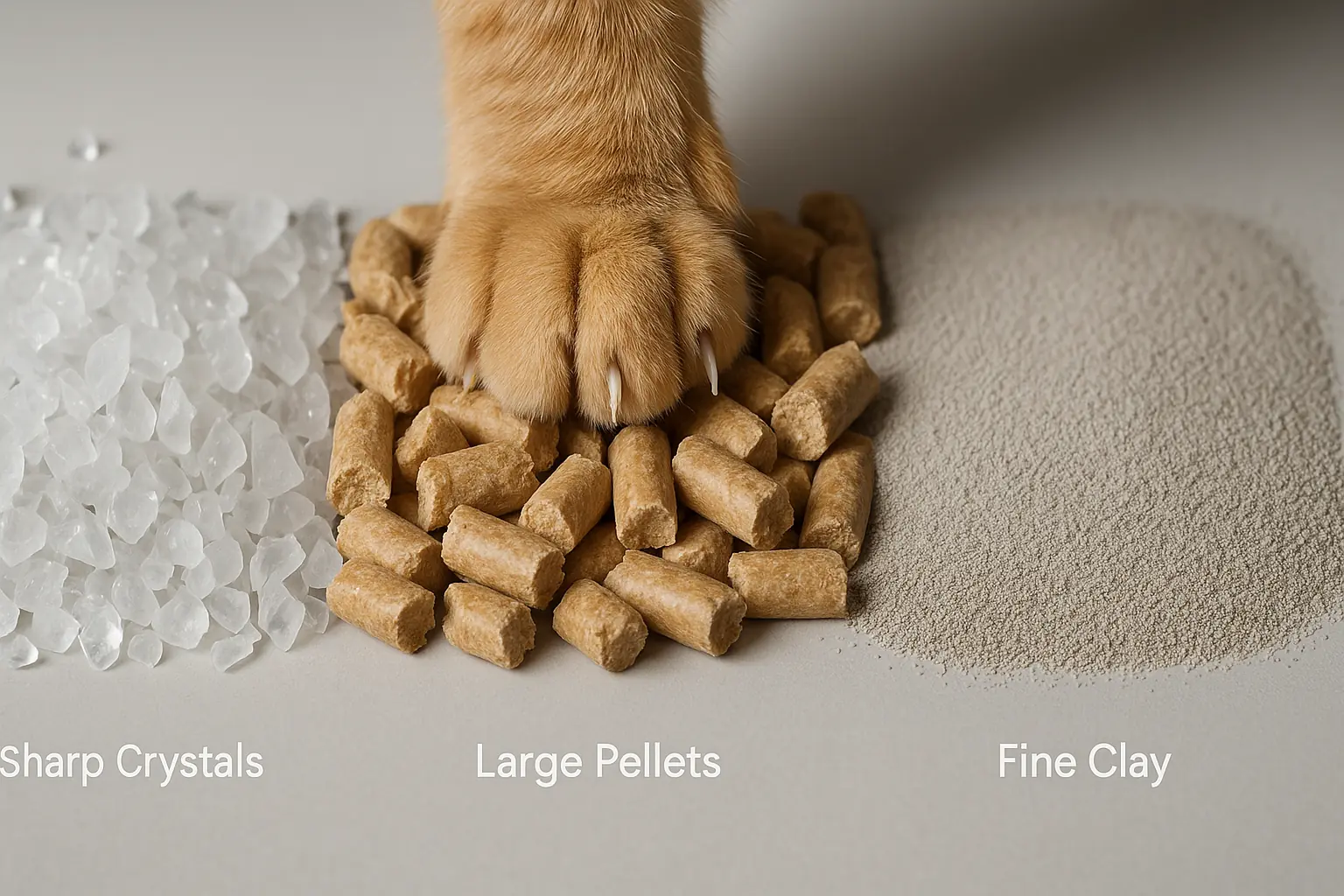
Some litters feel like hot coals under sensitive cat paws. User reports frequently detail cats rejecting litters with harsh, uncomfortable textures. Many owners of 'princess paw' felines share experiences of their cats refusing large, sharp silica crystals or hard, chunky wood pellets; it's like walking on LEGOs for them. This paw discomfort causes genuine distress.
Cat paw sensitivity heavily influences litter acceptance. Cats evolved to bury waste in soft soil; many user observations confirm this instinct drives preferences. Countless reviews highlight how fine-clumping clay or soft, sand-like natural litters frequently earn enthusiastic feline approval. These textures closely mimic natural substrates. Even the fussiest cats often agree.
Declawed cats often show heightened paw sensitivity, a recurring observation in owner feedback. Senior cats battling arthritis also struggle with coarse or sharp litter granules. What if your older cat suddenly avoids the box, or your declawed friend hesitates? User experiences overwhelmingly point to trying an ultra-soft, fine-particle litter. This switch can bring immense relief. Comfort often restores good litter box habits.
The Dust Dilemma: Respiratory Irritation and the Aversion It Breeds
Litter dust creates more than just a cleaning chore for you. It frequently irritates feline respiratory systems. Our analysis of user feedback uncovers a common theme: a cat uses a dusty litter, then immediately starts sneezing or coughing. Owners share experiences like, "My cat would exit the box in a sneezing fit after using that clay." This reaction is understandable. That cloud of particles directly irritates sensitive airways. For some cats, the area around the litter box becomes an avoided zone, not just due to the settling dust, but because of these airborne irritants.
This physical discomfort from dust is a primary driver of litter box aversion. Consider this. A face full of dust with every dig can be distressing for your cat. It's a pattern seen repeatedly in owner experiences: the unpleasant sensation leads to avoidance of the box itself. Many cat parents discover a solution. They switch to a low-dust formula. Their cat's comfort visibly improves, and consistent litter box use often returns. This simple change can make a world of difference.
The "Too Clean" or "Too Dirty" Conundrum: Feline Standards of Hygiene
Litter box hygiene often presents a Goldilocks challenge for cat owners. User feedback consistently highlights this delicate balance. Too dirty? Your cat may reject the box outright. Many owners find a daily scoop is non-negotiable to prevent such issues. Yet, some also report that an aggressive, bleach-heavy scrub-down causes their cat to view the box as alien. Familiar scent gone. This scent removal can trigger feline stress or confusion, according to numerous owner experiences.
So, what’s the secret to a cat-approved clean litter box? The patterns in user reviews suggest a clear path. Frequent scooping maintains daily hygiene effectively, many owners discover. They often combine this with less frequent full cleanings using only mild, unscented soap. This approach keeps the box sanitary for human household members. More importantly, it preserves enough familiar scent for the cat to feel secure and maintain ownership. Their box, their rules.
Interactive Guide: Pinpoint Your Cat's Litter Disapproval Clues
Litter Aversion Symptom Decoder
Select your cat's symptoms above and click 'Analyze Symptoms' to see potential litter-related triggers based on common user experiences.
This symptom guide offers potential starting points. Our analysis of thousands of user experiences shaped these suggestions. They are common patterns. Not medical advice. Think of these insights as your first community-sourced clue for what might be amiss with your cat's litter setup.
Now, your detective work begins. Does a pattern from the guide match your cat’s recent behavior? Or changes in your home environment? You know your cat best. Use these ideas to observe more keenly. The collective experience of cat parents simply points you in possible directions for investigation.
But remember this. Critically. If your cat shows sudden, serious changes in litter box habits, a vet visit is essential. Multiple concerning signs? Vet first. Many cat owners share stories: what seemed like litter pickiness was actually a painful urinary tract infection or another health problem. No online tool replaces professional veterinary care. Health comes first. Always.
Becoming a Litter Detective: Tips for Observing Your Cat (UGC Wisdom)
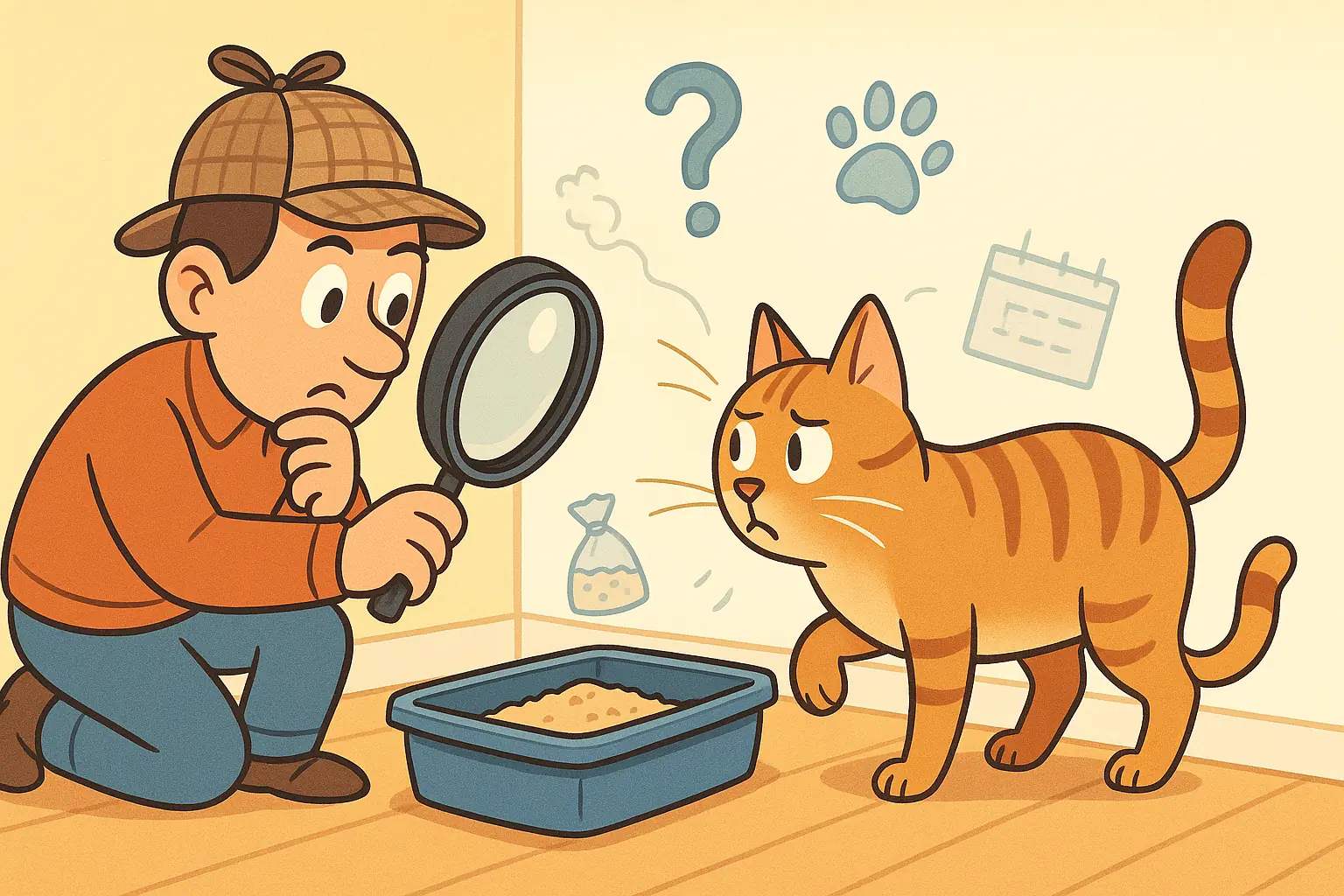
Keen observation unlocks many litter box mysteries. Experienced owners often suggest keeping a simple log. Did your cat’s aversion begin with a new litter, a different pet, or even a subtle change in your daily schedule? This community wisdom helps you connect dots, empowering you to pinpoint potential triggers.
Your cat’s body language around the box reveals crucial clues. Do they approach with hesitation or bolt immediately after using it? Many users report that cats sniffing the air suspiciously from afar, or circling with flattened ears, often signals an issue with the litter itself. These pre-entry rituals tell a story before a single paw touches the granules.
Suspect a specific litter type is the culprit? The 'two-box challenge' is a fantastic user-developed technique many swear by. Simply place two litter boxes side-by-side, each containing a different litter. Cats quickly show their preference through use. Their choice often becomes very clear, very fast, according to countless shared experiences.
One vital tip from seasoned owner-investigators: check under the litter box. Look behind nearby furniture too. Sometimes, the most telling evidence of litter dissatisfaction isn't in the box at all, but a hidden 'protest pee' or poo nearby. You are the primary detective in your home; these community-sourced techniques are your tools.
Important Caveat: When It's NOT the Litter (Always Rule Out Medical Issues!)
Sudden litter box problems demand a vet visit. This is critical. Symptoms like straining, crying, blood, or lethargy require immediate veterinary attention. Many user stories echo a common theme: "I blamed the litter, but my cat had a UTI." Your cat might be suffering silently. Prioritize their health. Rule out medical issues first. Always.
Pain often causes litter box avoidance. Arthritis is a frequent culprit. Injury or internal distress also contribute. If using the box hurts, your cat learns this painful association. A veterinarian can diagnose these hidden pains. No litter can solve this. Only a vet can help manage such conditions effectively.
Cat Litter Hub analyzes user litter experiences. We are not veterinarians. Our insights focus on litter performance from the community's perspective. Your veterinarian remains your essential partner for all cat health issues. Listen to them. Their medical advice is indispensable. This site offers data. Vets provide diagnoses.
Related Insight: Sudden Litter Box Aversion: User Detective Work to Uncover Hidden Triggers
Your cat suddenly avoids the litter box. This change can be baffling. Many owners report this frustrating experience. User accounts often point to subtle, easily missed reasons for sudden aversion.
Cat Litter Hub is developing a dedicated resource for these situations. This upcoming deep dive, "Sudden Litter Box Aversion: User Detective Work to Uncover Hidden Triggers," will synthesize community insights. It will equip you with practical steps to investigate and identify those elusive causes. Understanding hidden triggers is key.



